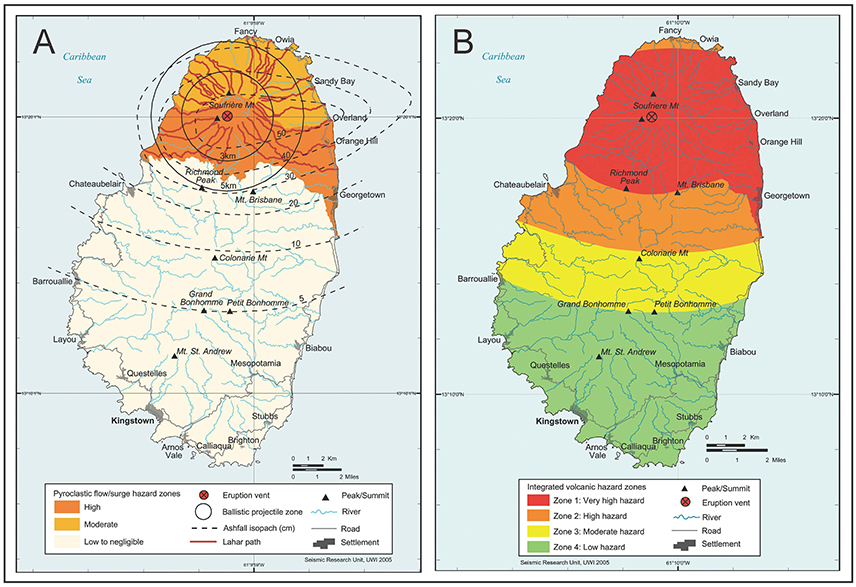Then again, it may not. They're not taking any chances, though -- its eruptions can be very explosive and this Caribbean island offers few safe places -- and they called an evacuation of the red zone (northern half of the island) about three hours ago.
This is the volcano that sprouted a cute little "donut" earlier in the year.

Remember that?
This is what the volcanologists tweeted a few hours ago:
Big change from its earlier slow growth. Also the seismicity has changed, and there are other worrisome signs. La Soufriere can be incredibly violent, so they've taken action. It's not exploding yet, but if it does, and with that dome plugging the conduit, it might be major, as in 1902.
Here's a post I did on this volcano and am updating as possible. It contains background as well as links to authoritative sources. Unfortunately there don't seem to be any public cams, though experts have it monitored.
This is probably your best bet for reliable, up-to-date information on the crisis.
This is the volcano that sprouted a cute little "donut" earlier in the year.

Remember that?
This is what the volcanologists tweeted a few hours ago:
Big change from its earlier slow growth. Also the seismicity has changed, and there are other worrisome signs. La Soufriere can be incredibly violent, so they've taken action. It's not exploding yet, but if it does, and with that dome plugging the conduit, it might be major, as in 1902.
Here's a post I did on this volcano and am updating as possible. It contains background as well as links to authoritative sources. Unfortunately there don't seem to be any public cams, though experts have it monitored.
This is probably your best bet for reliable, up-to-date information on the crisis.
Last edited:



